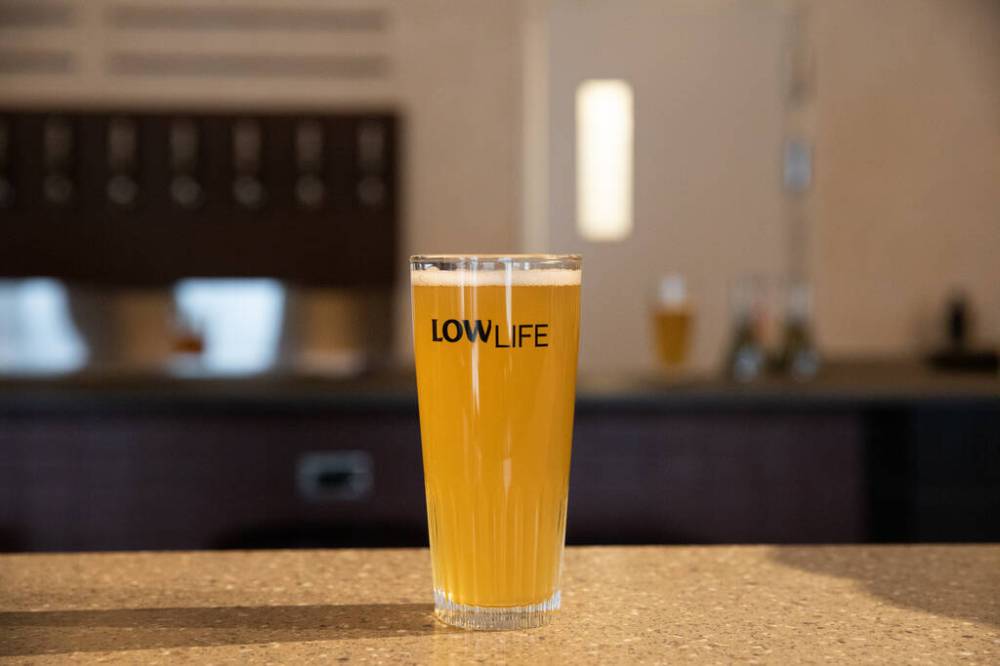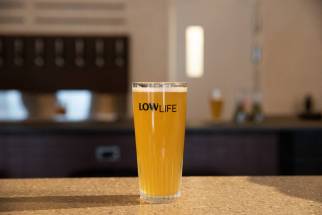A complex brew Winnipeg entrepreneurs embark on expensive, difficult quest to build a unique beverage experience in the city during a global pandemic
Read this article for free:
or
Already have an account? Log in here »
To continue reading, please subscribe:
Monthly Digital Subscription
$0 for the first 4 weeks*
- Enjoy unlimited reading on winnipegfreepress.com
- Read the E-Edition, our digital replica newspaper
- Access News Break, our award-winning app
- Play interactive puzzles
*No charge for 4 weeks then price increases to the regular rate of $19.00 plus GST every four weeks. Offer available to new and qualified returning subscribers only. Cancel any time.
Monthly Digital Subscription
$4.75/week*
- Enjoy unlimited reading on winnipegfreepress.com
- Read the E-Edition, our digital replica newspaper
- Access News Break, our award-winning app
- Play interactive puzzles
*Billed as $19 plus GST every four weeks. Cancel any time.
To continue reading, please subscribe:
Add Free Press access to your Brandon Sun subscription for only an additional
$1 for the first 4 weeks*
*Your next subscription payment will increase by $1.00 and you will be charged $16.99 plus GST for four weeks. After four weeks, your payment will increase to $23.99 plus GST every four weeks.
Read unlimited articles for free today:
or
Already have an account? Log in here »
Hey there, time traveller!
This article was published 06/05/2022 (1313 days ago), so information in it may no longer be current.
It’s a rainy Friday night in late April and most of the tables at Low Life Barrel House’s brand-new space are occupied for the brewery’s soft opening, where staff are pouring eight beers and two varieties of a fizzy grape-based beverage called piquette.
Among those surveying the room is Adam Carson, co-founder of Low Life with Tyler Birch of Barn Hammer Brewing Co.
There’s brewer Chris Young, one of the quieter members of the Low Life crew, who pops his head out from the brewing area in the back to periodically say hello.
Jesse Oberman, Low Life’s winemaker and assistant brewer (as well as the brains behind Next Friend Cider — a project that sees him foraging fruit from backyard trees and turning them into cider), is more the extrovert type, chatting away with anyone within earshot.
General manager Lucas Gladu is seemingly everywhere, overseeing patrons and the brand-new bar staff all at once.

I had wanted to chronicle a brewery build from start to finish for some time, and following Low Life’s progress at 398 Daly St. N. has proved to be quite the learning experience.
The challenges they’ve faced are even more acute because, unlike other locals, they’ll be making a range of barrel-aged beer, wine, cider and other drinks. And, of course, all the challenges have been compounded by the COVID-19 pandemic.
It has been a long, exhausting road to Low Life’s opening. Carson looks happy, relaxed, visibly relieved.
It’s a far cry from the stress he’s experienced on this yearlong journey, one that has taken up all of his time, a lot of his money and frayed relationships with friends and business partners.
APRIL 2021
I meet the 37-year-old Carson for the first time just weeks after he and Birch, also 37, signed the lease to take over the former Electra Sign office just off Pembina Highway. They’re in demolition mode, smashing through office walls and opening up the space that will hold the brewing and winemaking equipment, large oak barrels and taproom.
When the pair first started brewing together, Carson was a partner at Clearview Rentals, which is the equipment rental agency he still runs, while Birch had helmed TNT Fenceworks.
“Before we started Low Life I used to go over to Tyler’s house and brew in the basement, make this gigantic mess. The very first beer that we brewed that was doable was very close to the Grandpa’s Sweater,” says Carson, referring to Barn Hammer’s oatmeal stout, now a staple in their lineup.
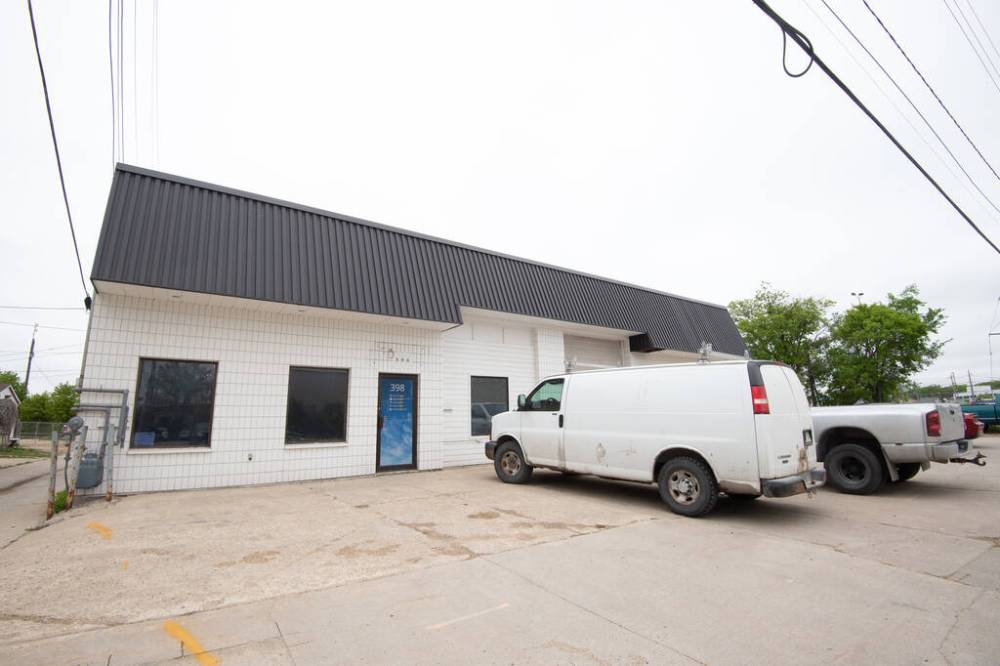
Birch mentioned to Carson that he wanted to get into the beer industry full time, sold his fencing business and got to work on what would become Barn Hammer Brewing Co.
Carson helped out with the build at Barn Hammer before he and his wife relocated to Toronto in 2018. Despite the move, it was around that time Carson and Birch decided to start their own brewing project, and the pair began brewing in earnest out of Barn Hammer’s facility in early 2019.
Rather than brew under the Barn Hammer name, Carson and Birch’s funkier, often barrel-aged beers were released under the name Low Life Barrel House.
“We started doing it as a side project for us; it definitely wasn’t for the money,” says Carson. “We’d release one beer at a time.”

Carson was mulling opening a bricks-and-mortar brewery in Toronto when the pandemic hit. When things started shutting down, including his wife’s fitness studio, they returned to Winnipeg.
At that point, he and Birch began searching in earnest for Low Life’s own space while continuing to make their barrel-aged beers in dribs and drabs at Barn Hammer.
In what was maybe fate, both Carson and Birch got separate emails from different real estate agents about the same Daly Street building, and they started swinging hammers in the space March 1, 2021.
The plan is to open the 100-person taproom in September. But for that to happen they’ll need in place both the brewhouse and the large oak barrels, called foeders (pronounced FOOD-ers), which will help impart Low Life’s signature flavour profile.
The brewhouse — essentially the engine of a brewery, which consists of brewing equipment including the kettle, brite tank and fermenters — is slated to arrive mid-summer, and the foeders shortly thereafter.
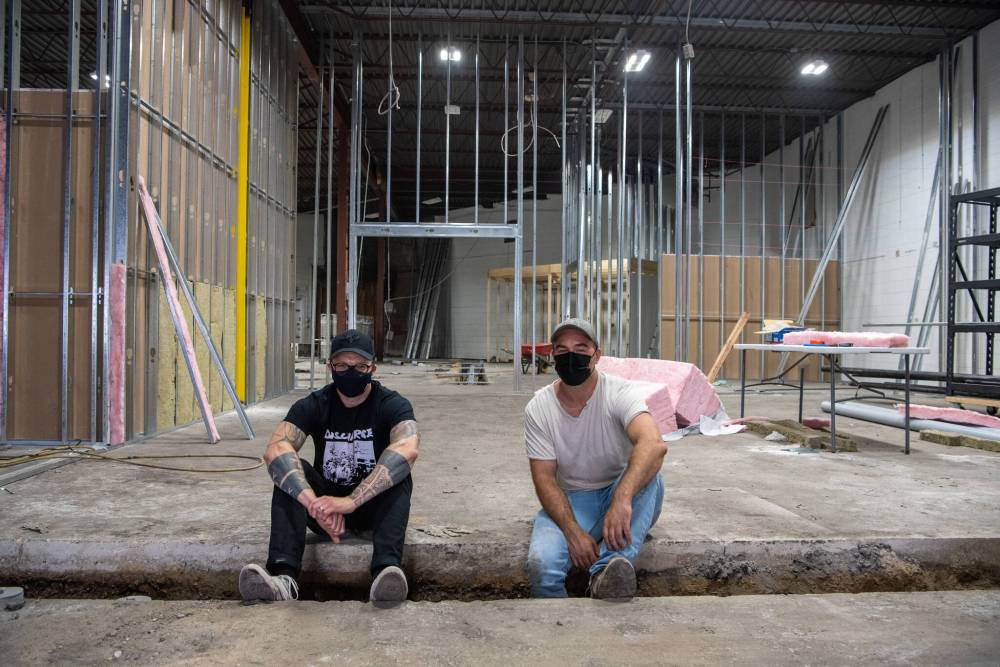
First there are the water upgrades to attend to so the building can handle the increased need for water required in the brewing and cleaning processes. Each regular-sized batch of beer they brew is about 20 bbl (beer barrels), the measurement used in the industry, which is the equivalent of around 2,300 litres. So there’s the water involved with making the beer, plus the cleaning of the tanks and barrels, the dishwashing, washrooms and more. Low Life had to upgrade the water line in the building to facilitate brewing, a fix that cost upwards of $25,000.
Instead of spearheading the brewing themselves, Birch and Carson hired Chris Young, longtime head brewer at Half Pints Brewing Co., who also moved to Toronto briefly and worked at Indie Ale House before returning to Winnipeg. “He’s been an absolute revelation,” Carson says. “Chris has brewed two new beers for us that are in mini foeders (at Barn Hammer), a dark saison and a Berliner… he’s been amazing.”
On brett and barrels
One of the signature features of Low Life Barrel House’s beer is the fact they’re infected, for lack of a better term, with brettanomyces (or brett).
Brett is a particular strain of yeast, which is often used in lambic beers and other Belgian and Belgian-style brews. It typically imparts earthy, funky flavours that, in moderation, bring additional complexity to beers.
At a facility such as Low Life, brewer Chris Young and winemaker Jesse Oberman will need to be careful to ensure airborne brett particles don’t infect the wines and ciders. While a bit of brett in such products can add similar complexity to beer, those funky flavours can easily overwhelm wines.
One place brett thrives particularly well is in oak barrels — hence the baker’s dozen of 2,300-litre large oak vessels called foeders in Low Life’s taproom. As is the case with wine, aging beer in oak barrels imparts different flavours than when finished in stainless-steel tanks before bottling. Barrels allow minute amounts of oxygen in and out, which ramps up the bretty notes and ages a beer differently. In addition to the taproom foeders, Low Life has a range of smaller vessels onsite, as well.
Making beer in foeders takes time — months, rather than the days or weeks typically involved with making beer. Hence the fact that, until Low Life can start packaging or kegging some of their foeder-aged beers in the next month or two, they’re focusing on making brews that reflect their unique flavour profiles but without the use of wood.
For more detail on Low Life’s innovative beer styles, visit lowlifebarrelhouse.com
One of the reasons the business is called Low Life Barrel House (rather than, say, Low Life Brewing Co.) is that the plan is also to operate an urban winery in the space, making reds, whites, rosés and sparkling wines with organic fruit purchased from Ontario. To that end, Carson and Birch hired Oberman, who has taken part in harvests in Ontario and Europe, worked as a sommelier in London, operates a wine-importing agency focusing on minimal-intervention “natural” wine producers called Elevage Selections and makes cider under the Next Friend name.
“I was really into natural wine for years. I learned about it in Montreal when I was on my honeymoon,” says Carson. “We went to London right after that, and natural wine’s everywhere — it blew my mind. Jesse and I moved back to Winnipeg around the same time, so I reached out to him.”
“It was serendipitous timing,” says Oberman, who was in France when the pandemic hit and, like Carson, retreated to Winnipeg. “Adam said he wanted to start making wine, and I was making cider in my basement.” Inspired by the minimal-intervention wines of southern France, the Alsace region as well as neighbouring Germany, the wines Oberman’s looking to make will be relatively low in alcohol, hazy in appearance due to being unfiltered and made in a hands-off style — all the hallmarks of “natural” winemaking.
“It’s like pretty thrilling to make wine in Winnipeg,” Oberman says (a sentence I never thought I’d hear uttered by anyone). “I wanted to be a winemaker, and I wanted to live in Winnipeg. And I just didn’t think the two were compatible.”
With a brewery, winery and cidery licence, the plan is for Oberman to move his Next Friend cider operations from Barn Hammer to Low Life, where he’ll have access to more space and barrels. They’ll also make piquette, a slightly spritzy, beer-strength beverage made from grape pomace, which is leftover skins and seeds, and water.
Until the barrel house can open, the modest revenue from sales of existing Low Life stock, as well as Carson and Birch’s income from their other businesses, is what’s keeping the demo work going.
JULY 2021
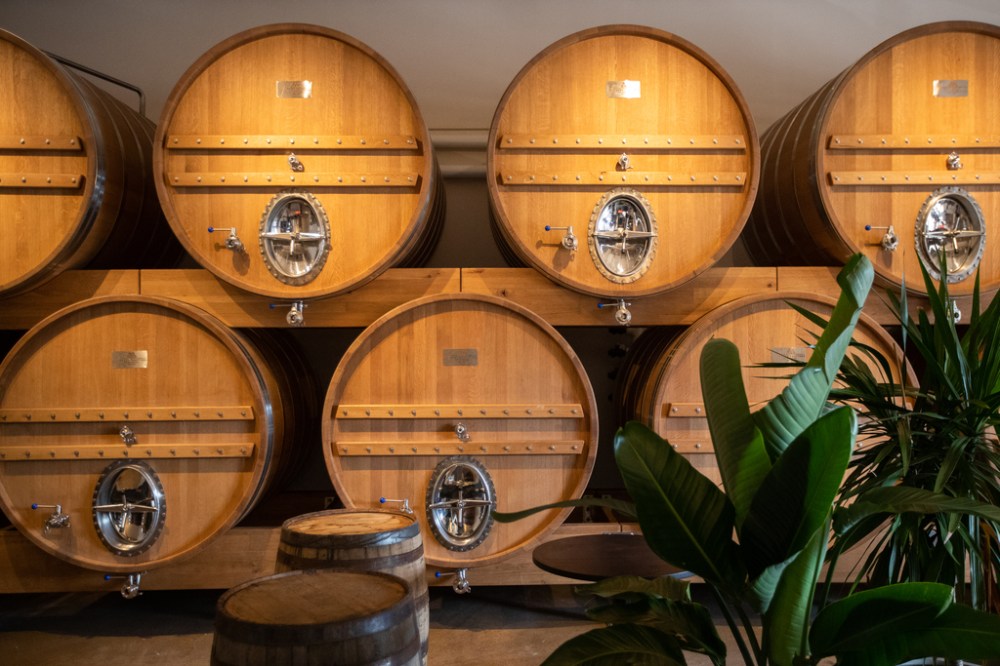
Low Life Barrel House isn’t yet looking anything like a spot to enjoy a pint. Over the sound of heavy machinery and heavy metal (Iron Maiden, to be precise), the pair point out where everything is going to end up — the brewing equipment, taproom, washrooms, cooler and more. “We’re also planning to get a still to make some whisky,” Birch notes. “We want to, say, get a Chardonnay barrel, age a brett beer in it, take that out and put whisky in there and see what happens.”
The big snag right now is paperwork from the city. “We’re just waiting on permits for everything — it’s now is in zoning’s hands,” says Carson. “I contacted zoning this morning… they won’t tell me where I am in the queue. Just give me a ballpark — are we talking number 300? Number two? Just so we can prepare better, talk to our subtrades… some trades will go elsewhere. The plumbers are going, ‘Well, I have another job to take.’”
That paperwork will set off a chain of events that will move Low Life much closer towards completion. “Once we get our permit, the inspector will come, sign off on the plumbing, we can pour the concrete, let that sit, and then the floors come in and then, go time.”
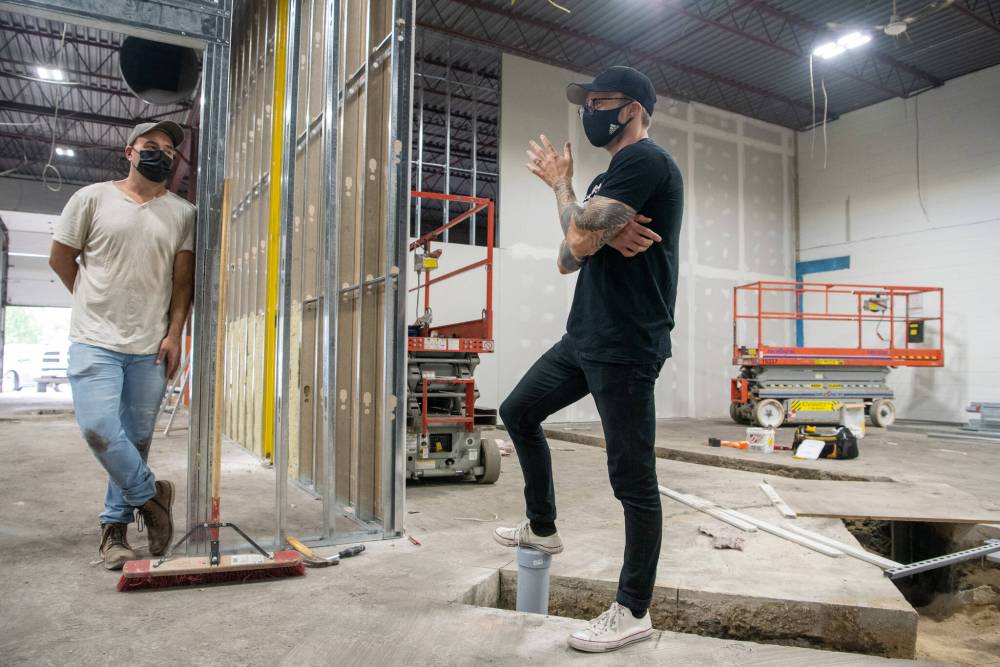
In the meantime, arrangements are being worked out with the Manitoba Liquor, Gaming and Cannabis Authority that will allow the first step in the brewing process to happen at Barn Hammer, then have the non-alcoholic grain juice transferred to Low Life for fermentation and aging in the foeders. “We’d basically make the beer there, then drive it over here, pump it into the foeders and just let it sit.”
The 13 foeders slated to sit in Low Life’s tasting room have arrived, but until the concrete can be finished and the floor installed they’re sitting empty at Clearview Rentals. They’re a key part of what sets Low Life Barrel House apart from most other local craft drinks-makers.
“One of the trickier points about Low Life is that many people don’t really know what we do or how we do it,” Carson says. “The taproom will solve a lot of those problems. You come in and go, ‘What are these big barrels?’ That’s what we age our beer in.” Adds Birch, “That’s why we were very interested in having them on display.”
The brewhouse, meanwhile, is another story. “We ordered it in December, and it was due to come in July,” Carson says. “Now it’s pushed back to September.”
All of which makes their initial September opening date likely unattainable. “I think October might be more realistic but honestly, it’s probably going to be November,” Carson admits.
SEPTEMBER 2021
Sure enough, delays and setbacks along the way mean the September opening isn’t going to happen. This isn’t a huge surprise, as anyone who has opened a brewery can tell you.
And while things aren’t progressing on schedule, when I pop in to Daly Street to catch up with Carson and Birch in the fall of 2021, there has certainly been progress. The cooler in the back area, where grains and finished cans and kegs of beer will be stored, is done, with the exception of the door. “We just sent the cheque this morning — it’s supposed to be here for the first week of October,” says Carson.
The refrigeration units, meanwhile, will be installed on the roof later in the week, and the drywall in the space (being finished in large part by Birch and his father, who owns Brandon’s Black Wheat Brewing Co.) is nearly done. Once it’s finished, the urethane floor will be installed, but that can’t happen until the refrigeration units are out of the space and on the roof. “And another big thing we’re waiting for right now is the electrical to get switched over,” says Birch. “We need more power.”
“If we didn’t order by the day we did, they went up some 25 per cent in price. And since then, they’ve gone up again.” – Adam Carson
Carson expresses frustration at the delays they’ve encountered, many of which were due to supply-chain issues. One particular snag they’ll encounter repeatedly along the way is with doors — particularly bay doors for the front of the building and fire-rated units needed for installation between the brewhouse and taproom. “The bay doors, which we ordered in late April, early May, it looks like they’re coming the sixth of November,” says Carson. “And normally that’s something that you should be getting, like, two to four weeks after you order. Today I contacted two different Hutterite colonies to build them, just to see if they could get them quicker.”
He also notes the cost of materials, including the bay doors, are skyrocketing. “If we didn’t order by the day we did, they went up some 25 per cent in price. And since then, they’ve gone up again.”
Carson expects the brewhouse to arrive the week after the urethane floor is installed; the fermenting tanks have already arrived, and are for the time being stored at Clearview Rentals with the foeders.
Meanwhile, they have added Lucas Gladu to their roster. He was formerly in charge of the bar at Forth, and will act as general manager and salesperson. He’s working part time for now with the intention of going full time in January.

And while the delays have caused significant headaches and dented Carson and Birch’s cash flow, they’ve taken what they’ve learned from the Barn Hammer build and put it to good use.
“When I did Barn Hammer, I got an architect to just mostly approve stuff, and we kind of designed it ourselves for budget reasons, which ended up with some regrettable oversights,” Birch says. “This has been much more planned out and organized in that way.”
But he is starting to find he’s less able to keep tabs on things back at Barn Hammer.
“I spend all my time here,” he says. “I keep trying to do Barn Hammer stuff, but I have to finish so many things here. Before we do the wall, we need to put the draft lines in, finish the drywall so that the electrical guy can do his thing.”
“I keep trying to do Barn Hammer stuff, but I have to finish so many things here. Before we do the wall, we need to put the draft lines in, finish the drywall so that the electrical guy can do his thing.” – Tyler Birch
Low Life has also been broken into twice in the past couple of months. “I had all my tools stolen,” Birch says. “The first time they took my cordless angle grinder, and then the second time they came and just cut the hinges off the door with that same cordless angle grinder. Just peeled it back like a banana and crawled in.”
But Carson’s still somewhat optimistic, noting that if installation of doors and approvals from the city come through, there’s still a chance to open in 2021, albeit with some temporary fixes for smaller missing pieces. “We could perhaps have a soft opening… let’s say mid-November. I could deal with Dec. 1,” he says. “But we’re not missing the holidays, I can assure you of that.”
NOVEMBER 2021
Birch and Carson meet me again at Daly Street, where things are visibly coming together, although far from completion. The floors are done, the brewhouse is in place and the 13 foeders line one of the taproom’s walls. It’s shaping up to be a brewery unlike any other in the city.
While the bay doors still haven’t arrived, Carson expects them soon, and most other door-related issues appear to have been resolved. “Getting material is out of control. But we got doors. We had to pay extra and they were rushed through. We ordered them last week and we get them in three weeks.”
Both Young and Oberman continue to make beer, piquette and cider at Barn Hammer, although production on Low Life beer continues to scale down as more materials are brought to Daly Street.
“Jesse is the hardest-working person. He’s there from mornings until midnight doing beer stuff, his cider stuff, wine stuff,” Carson says.

Both Birch and Carson are cognizant of the toll building Low Life has taken on their respective psyches.
“I think the last time we were here with you I was a bit down about it all,” Birch says to me. “But we’re starting to see the light at the end of the tunnel.”
Carson agrees. “I feel the same way. We were both down and negative, with so much going on. But yeah, I think there is a clear ending ahead.”
As to when they expect to arrive at the end of the tunnel, Carson remains optimistic.
“I think we could maybe be brewing in three weeks,” he says. In terms of an opening date, however, he’s less specific. “I think we’d open the minute we were allowed to. We need some money coming in.”
JANUARY 2022

The holidays have come and gone, and Low Life is still neither open nor making beer on site. Carson, visibly downcast when I drop by in January, rattles off many of the same problems that plagued them on my last visit — supply-chain issues, cost increases to materials and the like.
But again, there has been more visible progress. The brewhouse is completely installed, the taproom fridge and merchandise area completed, the washrooms and plumbing nearly done and the kitchen (essentially just a dishwasher for glassware — there’ll be no food prepared at Low Life) is close, too.
Other progress is less visible, namely the preparation of the oak foeders to receive beer for aging. They’ve been steamed, and will first be filled with what’s called a “trash wort”— a low-alcohol beer that can be dumped after use (unless it tastes good, of course) — to help with conditioning and mellowing out the woody notes in the barrels. “Water doesn’t do it — it’s not acidic enough,” says Birch. “I think the lower pH of the beer actually takes some of that oakiness out.”
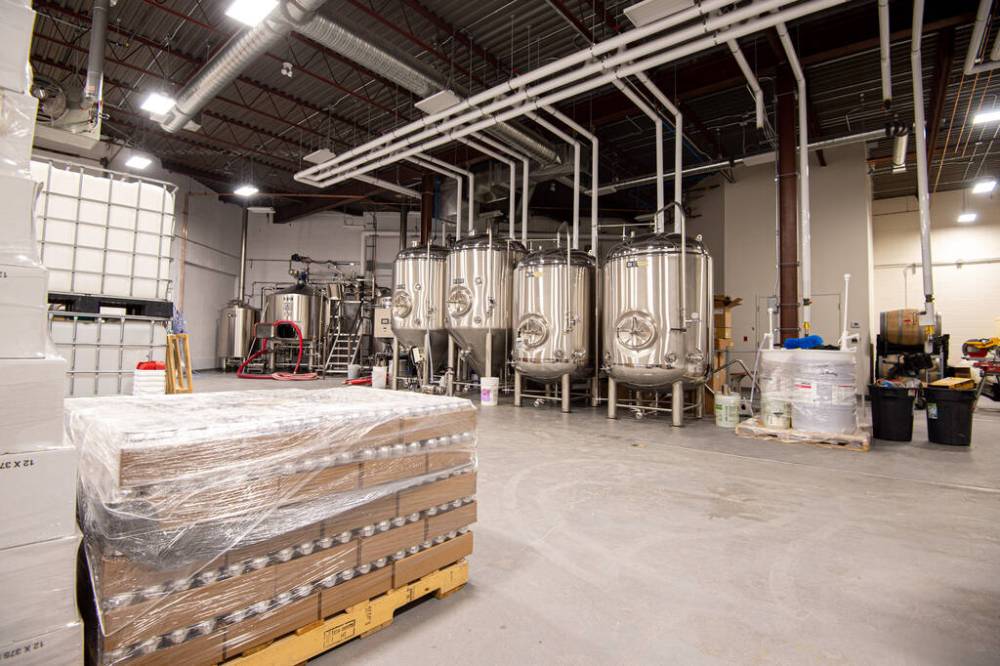
One of the unwelcome holiday gifts for the Low Life crew has been contracting COVID — both Oberman and Young tested positive, while Birch was laid up with what he assumed was COVID, as well. Only Carson managed to dodge getting sick.
Production of Low Life beers at Barn Hammer has pretty much stopped in anticipation of getting up and running on Daly Street. “We have a couple beers in foeders at Barn Hammer and that’s it,” says Birch, whose drywalling and construction duties at Low Life have wrapped up, allowing him a bit more time at his Wall Street brewery.
For Oberman, unlike the others, witnessing any kind of a build first-hand is new, and has been a revelation.
“Adam works in construction and Tyler has built a thousand things. Chris has opened breweries before, too. There’s a lot of problem-solving every day,” he says.
“We were both down and negative, with so much going on. But yeah, I think there is a clear ending ahead.” – Adam Carson
“Every time something comes up, I’m like, ‘Oh, my God. It’s going to ruin everything.’ And they’re like ‘no, no…’”
He hopes to have some piquettes ready to go in March that he reckons will be made at Barn Hammer, while Young gets to know the newly installed brewhouse.
I hesitate before asking again about an opening date, risking sounding like a broken record, but Birch sounds confident. “There’s not that much to do in here, although I know it doesn’t look like it,” he says, laughing. “It’s definitely not 2 1/2 months from now. There’s no way it will take that long.”
APRIL 2022
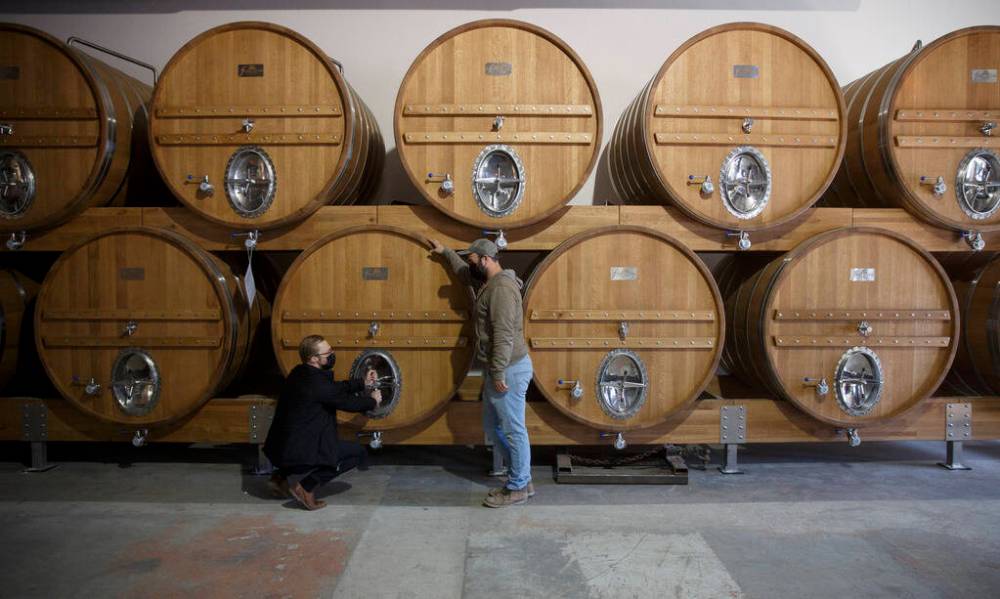
In early April, 2 1/2 months later, there’s not been much news from the Low Life camp, which I figure isn’t a good sign, so I email Oberman, Birch and Carson about meeting again, with the hopes things are nearly ready to go one year after we first met to chat.
After locking in a time to meet at Daly Street, Carson informs me Birch is no longer part of the project. It’s odd to be back in the space without Birch there, but Carson offers his take on his departure.
“Owning and running one brewery is a hell of a lot of work, plus he owns Mammoth Canning (a mobile canning facility used by many local breweries). And then navigating it through a pandemic, while trying to open another brewery during the pandemic and with a young family… I imagine it’s a bit overwhelming, a bit much for anyone’s plate,” says Carson, who has a young child of his own and another on the way.
“I’m not saying he can’t handle that workload. But you’ve got to focus on your priorities. If you own all of Barn Hammer and half of Low Life, what would you rather save? If you lose Barn Hammer, you’re totally screwed.”
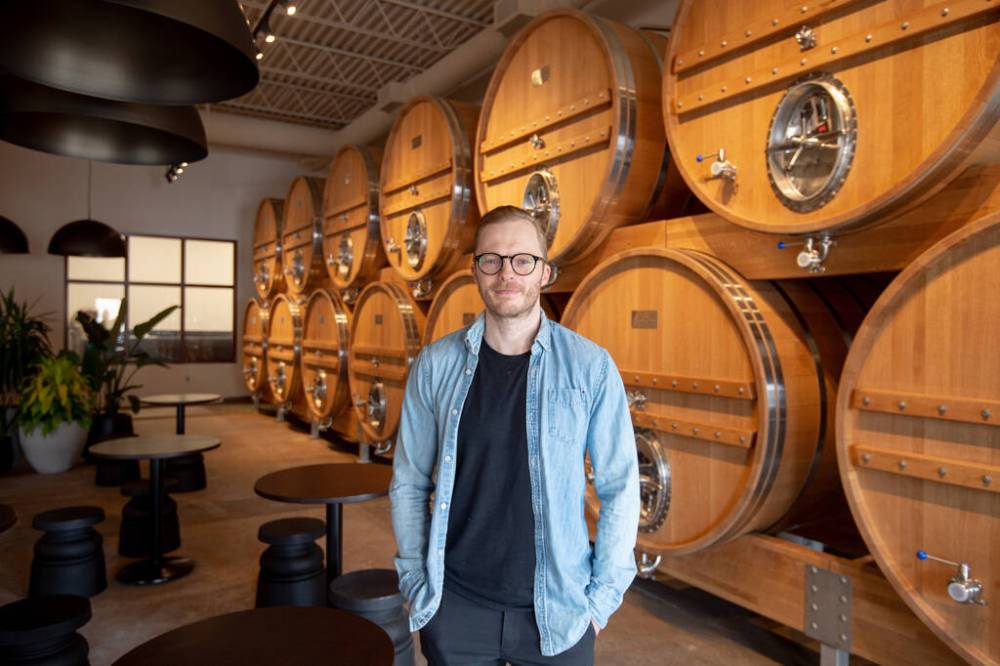
Carson explains he and Birch officially ended things a few weeks back. “We had a conversation in December where he was going to step back in some form. Then in mid-January, he was back on, had figured his situation out differently. And then it just kind of petered out again, back to where we were.”
With all the big pieces in place in the facility, however, things really are looking near completion. The taproom bar and furniture are in, lighting looks to be mostly done and, lo and behold, there’s beer, brewed on site and in cans and kegs, although they’ve not been aged in foeders — there’s just no time. About half of the foeders are filled with beer aging away for future release.
“We canned and packaged some beer… that was very satisfying,” Young says. “And as much as I don’t mind doing other things here, it’s good to be able to just make beer. But I know this same story from every other brewery that’s ever opened — there’s so many things that go into it.”
Carson, who seems exhausted but with a glimmer of optimism, jumps in. “I wish I knew what he knew. I’m in construction and we just install. This has been a lot different than anything I’ve ever been a part of. There were a lot of moving parts.”
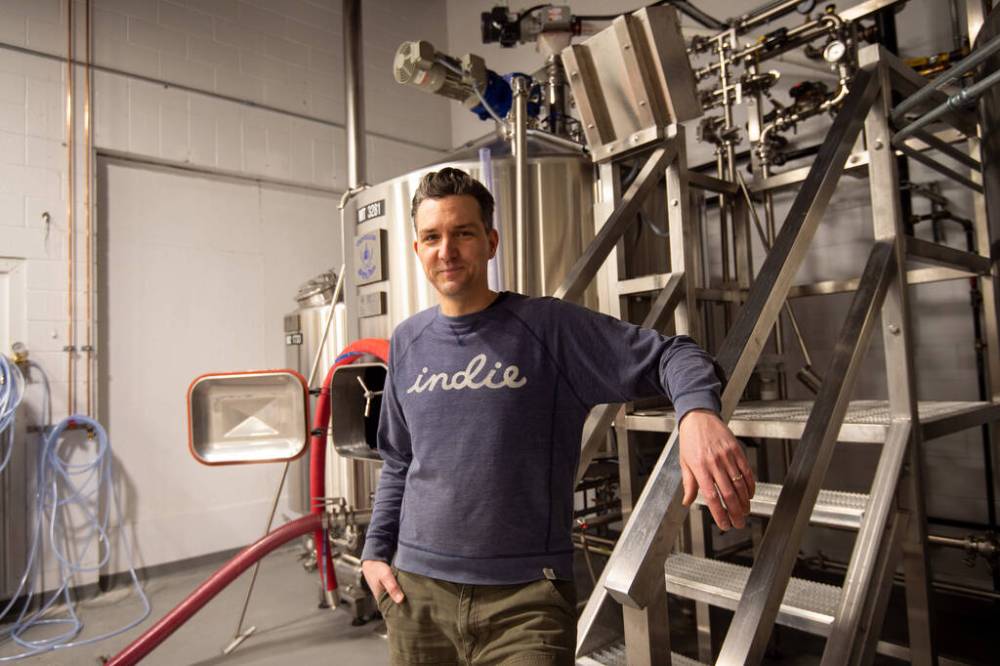
Speaking of parts, the cost of wood has skyrocketed over the last year. “We have a beautiful exterior design and patio, which is 90 per cent wood,” Carson says. “And we’re just holding off from doing it. Wood has gone up in price so much that it’s not doable right now. So we’re going with a temporary patio, which aesthetically is not going to be as nice. That’s not putting your best foot forward, but that’s the reality.” Carson says the patio will have room for an additional 60 guests.
And the bay doors that will lead to the patio have yet to arrive. “We’re still waiting on the overhead doors we ordered over a year ago. They’re still not here,” Carson says, almost laughing. “They’re supposed to ship today from Nebraska. They’re beautiful — glass with black trim. Light’s going to be pouring in here. It’s going to look great.”
He’s pleased about the look of the taproom, although some of the first choices on particular elements didn’t come through. And those changes came with a cost. “These last-minute changes, you hear, ‘Oh, that tile, by the way — it’s unavailable. The one you wanted, which is X amount per square foot… this one’s twice as much, but it’s all we can get in time for you to open,’” he says. “I need more chairs. So I emailed two weeks ago about chairs, and they are $110 more each than they originally were.”
Asked about cost overruns on the project as a whole, Carson doesn’t get into specifics — and I don’t ask — but he says there have been enough of them.
“It’s not double, but it’s not far off,” he says, wincing. “And a lot of that was due to COVID. You can’t just make that money back. It’s not like you can say, ‘Oh, we paid an extra 20 per cent for this countertop, so now we’re charging a percentage on the beer.”
Not all of the 20 taps behind the taproom’s dark porcelain bar will have beer, wine or cider flowing from them when the place opens, but many are already spoken for. Carson anticipates seven beers will be available on tap initially with offerings including a piquette, two different grape ales, a house saison, a small pale, a dry-hopped sour and a dark mild, none of which will have been aged in foeders but which will still be representative of Low Life’s unique take on brewing.
Tasting notes
The first four beers below were brewed at Low Life’s new location, albeit not aged in foeders, due to the time it takes for barrel-aging. They’re available at the brewery, and have started rolling out to Liquor Marts and beer vendors.
The latter two brews were aged in oak, although they were brewed at Barn Hammer’s Wall Street location; as such they can’t be sold at Low Life, but are at Liquor Marts and beer vendors, and may still be available at Barn Hammer.
The first four beers below were brewed at Low Life’s new location, albeit not aged in foeders, due to the time it takes for barrel-aging. They’re available at the brewery, and have started rolling out to Liquor Marts and beer vendors.
The latter two brews were aged in oak, although they were brewed at Barn Hammer’s Wall Street location; as such they can’t be sold at Low Life, but are at Liquor Marts and beer vendors, and may still be available at Barn Hammer.
House Saison (5.2 per cent alcohol by volume, $3/355 ml can) A typical Belgian-style saison comes with higher carbonation, plenty of fruit and spice notes. Low Life’s house variety is pale straw and hazy in appearance. Bread dough, spice, floral and slightly grassy aromas. Dry, light-plus bodied and crisp, fresh citrus (lemon rind), grassy and subtle spice notes. Complex but easygoing.
Dark Mild (4.4 per cent ABV, $3/355 ml can) Pale cola in colour with an off-white head. Up-front malt, toffee and dried fruit (raisin) aromas. Slightly off-dry, pronounced toasted almond and malt flavours, very low bitterness, hints of dried fruit. A rainy-day beer that brings dark-beer flavours with far less weight than most.
Small Pale (3.4 per cent ABV, $3/355 ml can) Pale straw and hazy in appearance. Bright tropical (pineapple, papaya) and grassy aromas. Dry, crisp, moderately hoppy, citrus rind and tropical flavours, underlying malt notes. An ideal post-lawnmowing beer offering remarkably intense flavours while landing with lower alcohol content.
Cabernet Franc Saison grape ale (5.7 per cent ABV, $5/355 ml can): Grape skins in contact with the beer give a slightly pinkish look to this gold, hazy beer. Berry, spice, bread dough and malt aromas are most prominent, all of which persist on the mainly dry, light-bodied, tart and complex palate. There isn’t anybody combining beer and wine elements quite like this — especially using organic Ontario grapes.
Berliner Weisse (4.9 per cent ABV, $3.65/355 ml can): Pale gold and hazy in appearance. Funky, earthy aromas as well as vanilla, wheat and subtle banana. Dry and light-plus bodied with slightly salty, tart citrus, bread dough and subtle woody flavours. A good introduction to brett beers, as both the oak influence and funkier notes are discernible without being overpowering.
Kiss Kiss Apricot Brett Saison (Six per cent ABV, $4.75/473 ml can): Medium gold and slightly hazy in appearance. Tart balsamic and subtle apricot aromas that come with that funky brett note. Dry, medium-bodied and slightly tart, with a more pronounced barrel note that comes with the slightly nutty apricot component. A wild mix of fruit and funk for more adventurous palates.
— Ben Sigurdson
In the big wooden barrels are some of Low Life’s staples — the Blood Cut brett IPA, Tempestarii saison, Low Light brett table beer and Majik concord grape saison with brett. Also in the foeders is a pilsner, which will likely get the brett treatment as well. But they’ll not be ready until late May or June.
Oberman, meanwhile, has been working with his Ontario grapes on some of his first creations. For the most part, production on the wine started at Barn Hammer and will be finished at Low Life — initial offerings will include a rosé made of skin-macerated Vidal grapes as well as Cabernet Franc, three sparkling wines, another skin-contact Vidal that will be an “orange” wine and a white blend, of which there will be two iterations — one for Low Life and one for Barn Hammer.
And while Carson seems in slightly better spirits, the stress is still palpable, much of which he attributes to dollars and cents. “If anything ever really bad happened to my other company, I’d be in trouble. And now I’m spending almost all my time here,” he says, echoing Birch’s sentiments before he stepped away. “Unless you’re working 80 hours a week, you ignore one business. And your family. My daughter is due in a month.”
He pauses before continuing. “It’s been the worst year of my life. I’m a very positive person and very upbeat, high energy. I usually try to kid around and laugh, and now I can’t sleep. But, you know, the last couple of weeks, I’ve been trying to be a little bit more positive. Because I can see it. I can see a light at the end of the tunnel. Drinking some of these new beers that Chris is making, with zero guidance for me… the last couple he’s made have been fabulous.
“I’m really excited about this place… we just need to get the doors open at this point.”
And, he says, barring any last-minute snags on approvals from the city and the like, Low Life Barrel House will have its soft opening on April 29, and officially open to the public May 4.
● ● ●
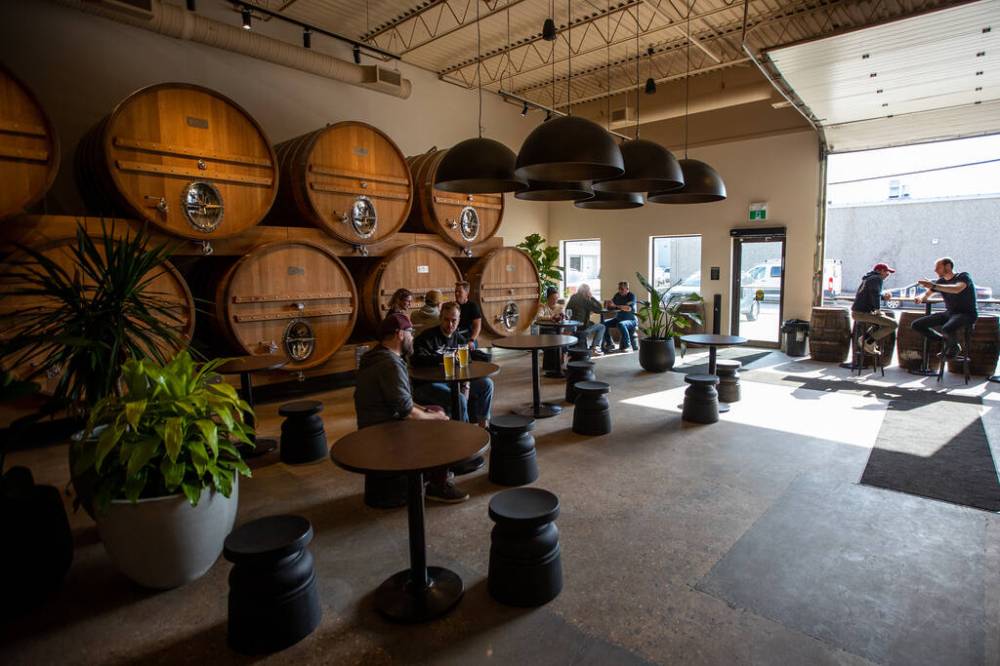
A couple of days later, I stop by Barn Hammer’s Wall Street taproom to touch base with Birch about the split. When I arrive, he’s working the canning line for the initial offering from Super Fun Beverage Co., a project he and Carson both still co-own and whose initial offerings will be craft seltzers. Birch steps away from the line for a few minutes, visibly more relaxed than during our previous Low Life visits.
“What I wanted from Low Life and what (Adam) wanted from Low Life was different. We just wanted to go in different directions,” he says. “The other part was that Barn Hammer was really suffering — I was doing the construction at Low Life, spending so much time there. And I have a young family… it was like, I just can’t do it. Even if it was going super-well I probably would have backed away.”
Birch notes the pandemic was particularly hard on Barn Hammer — add in the rebranding they’re rolling out, upcoming renovations to the space and other projects such as Super Fun and Mammoth Canning, and it was all too much.
And while he’s disappointed he won’t be a part of the facility he helped build, Birch has no regrets about the decision to step away and focus on Barn Hammer.
“It’s been so much easier,” he says. “I’m way happier, way less stressed.”
● ● ●
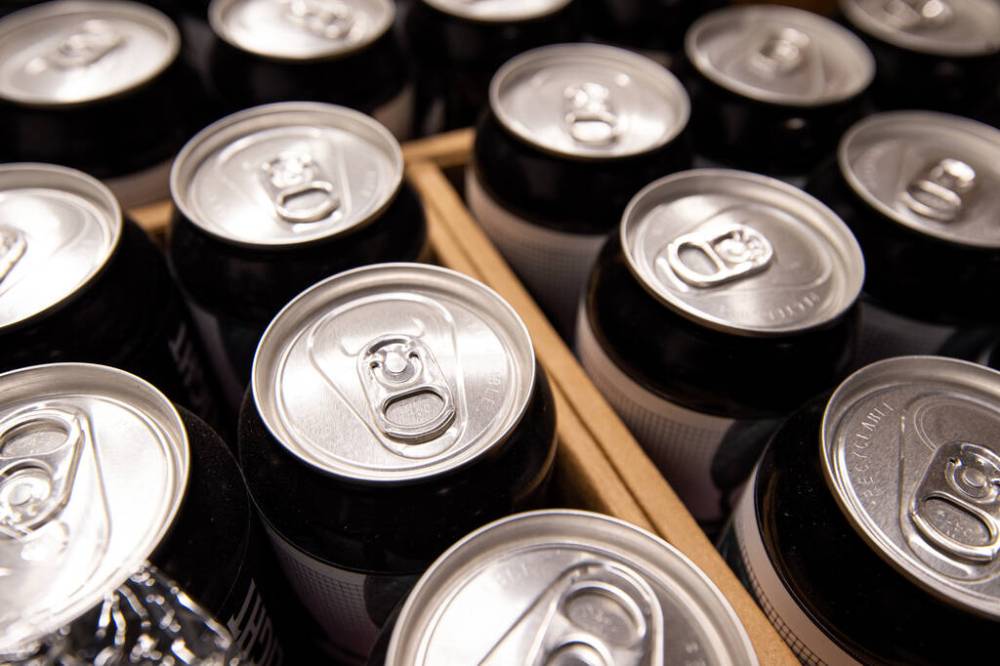
It’s the evening of April 29, my last official visit. The construction noises have been replaced by the din of human voices — a taproom filled with people chatting and drinking beer under large domed light fixtures, that fabulous wall of foeders offering a beautiful backdrop.
The menu of beers on the wall behind the bar is missing a couple of letters and not all the lights are lit quite yet, but it’s finished enough. Once those new bay doors are installed and the evening sun is shining through, it will be quite a sight.
Tonight the rain from the latest Colorado low to blast the city is just starting to fall.
In addition to the eight beers and two piquettes on tap, there are several offerings in cans to go, none of which have been aged in barrels but which bring Low Life’s tasty left-of-centre, adventurous approach to beer. There’s also glassware, T-shirts, hoodies and more for sale. Staff are pouring drinks as Carson, Young, Oberman and Gladu circulate and chat with the various invited tradespeople involved in putting the place together.
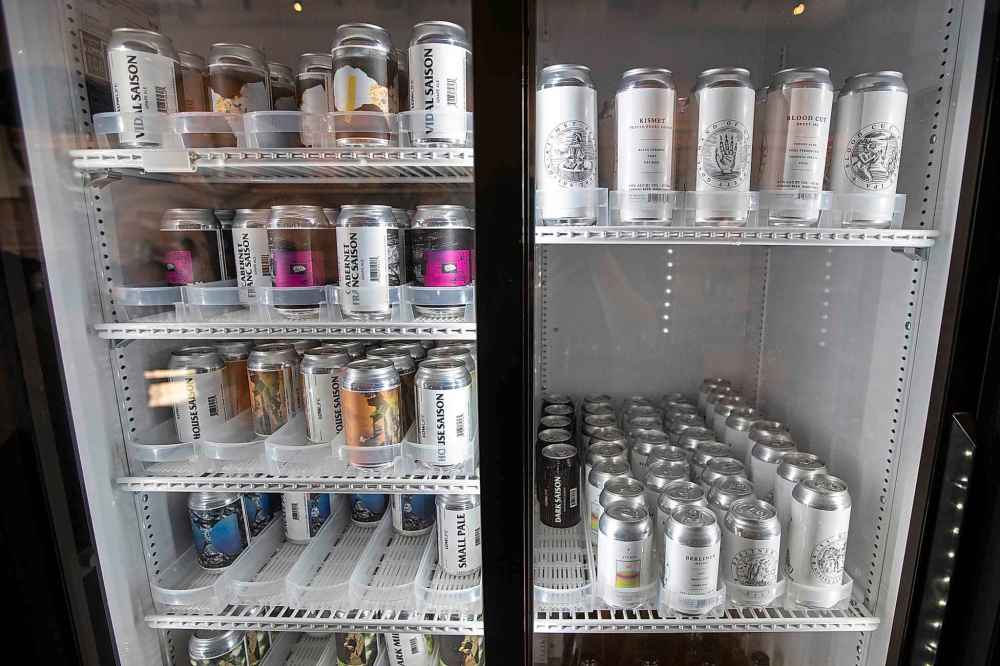
Oberman and Young say they’ve found working together both inspiring and educational, although the chaos of getting ready to open and the fact that Oberman is still doing Next Friend cider stuff at Barn Hammer means the pair haven’t collaborated extensively at Daly Street, with the grape ales pouring on tap and in cans their first true tag-team effort. They’re an unlikely pairing, but one that seems destined to bring a real sense of adventure to Winnipeg’s craft beer and wine scene.
And the doors do officially open to the public Wednesday with photos of the handsome foeders, hazy beers and slick new taproom already spreading across social media. Low Life has already had many requests for special-event bookings for later in the year, and between the barrel wall, the innovative beers and the spacious taproom, it’s easy to see why.
One of the things I’ll take away from chronicling Low Life’s journey from side project to stand-alone drinks-maker is that cost overruns and delays are pretty much the norm, although in this case they were escalated by the pandemic. And while the beers taste great and the almost-completely finished facility looks spectacular, both front and back of house, there’s so much hard work and behind-the-scenes issues to contend with that anyone considering opening their own brewery better have lots of free time, an abundance of patience and even more money.
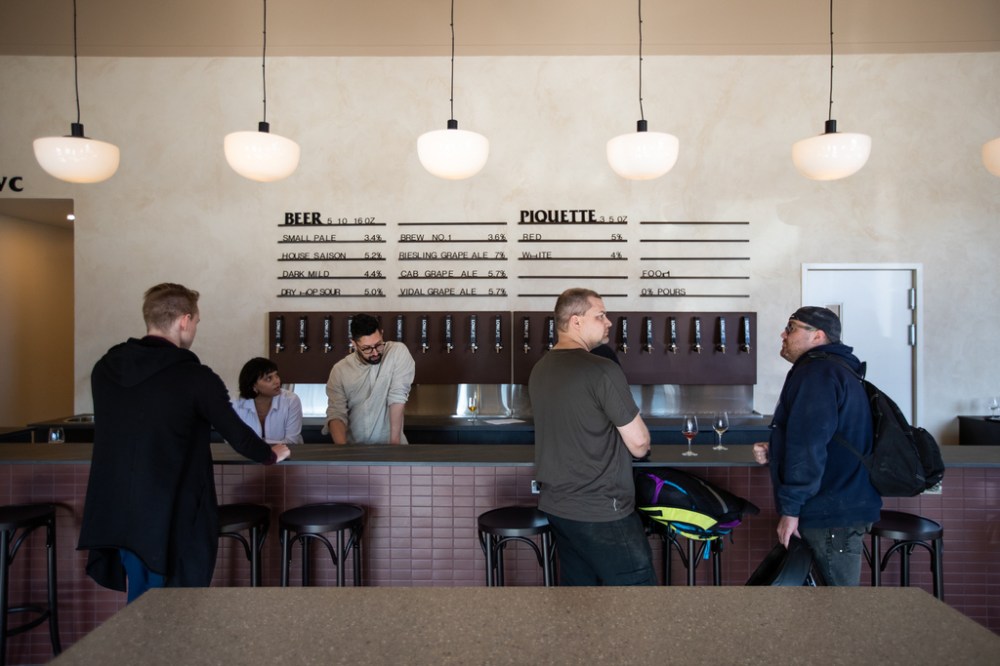
Carson’s not the tallest drink of water out there, but on this occasion he seems to stand taller and is visibly more lively — he looks as though the weight of the world has been lifted from his shoulders. I corner him for some last words.
“The last week of getting ready to go was beyond stressful. But everybody pitched in, from top to bottom. I’m a bit overwhelmed,” he says. “I’m looking forward to just getting through this weekend and really seeing the public come in enjoy the place.
“I think Winnipeg’s really going to embrace it. It’s a brewery, but it’s a little bit different.”
ben.sigurdson@freepress.mb.ca
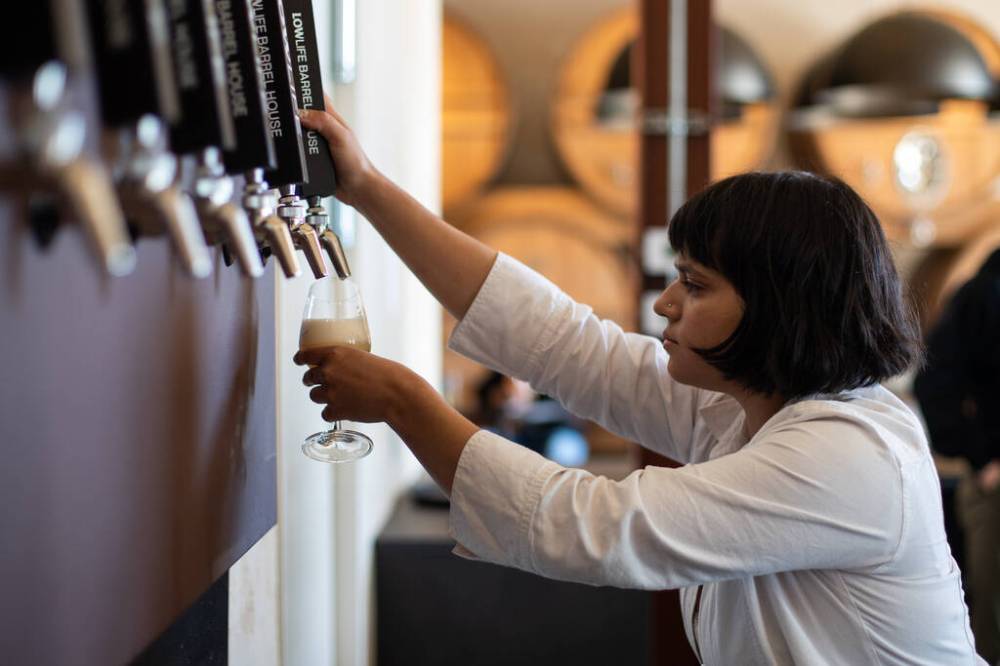


Our newsroom depends on a growing audience of readers to power our journalism. If you are not a paid reader, please consider becoming a subscriber.
Our newsroom depends on its audience of readers to power our journalism. Thank you for your support.

